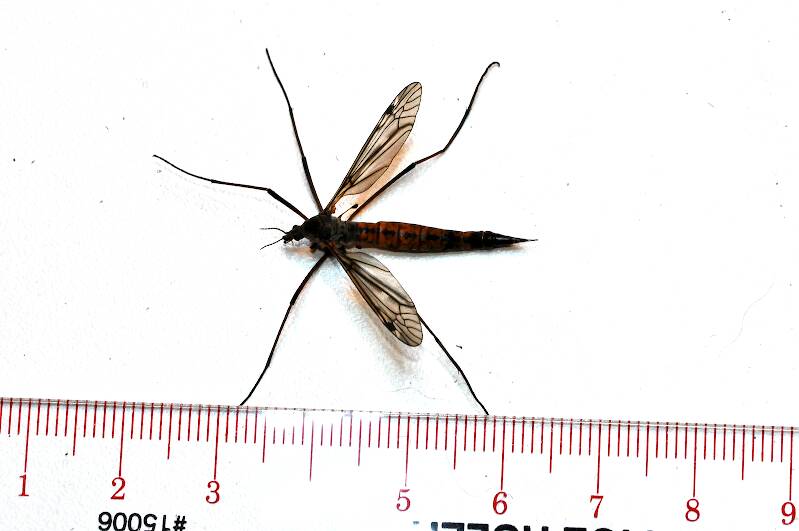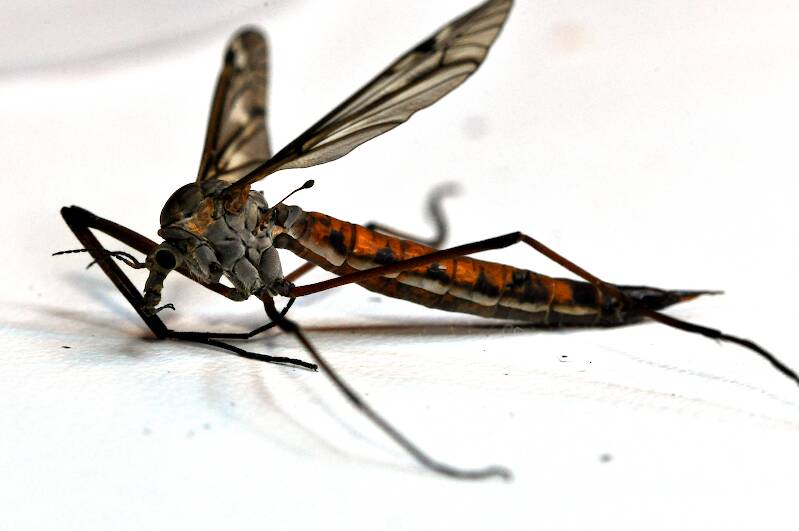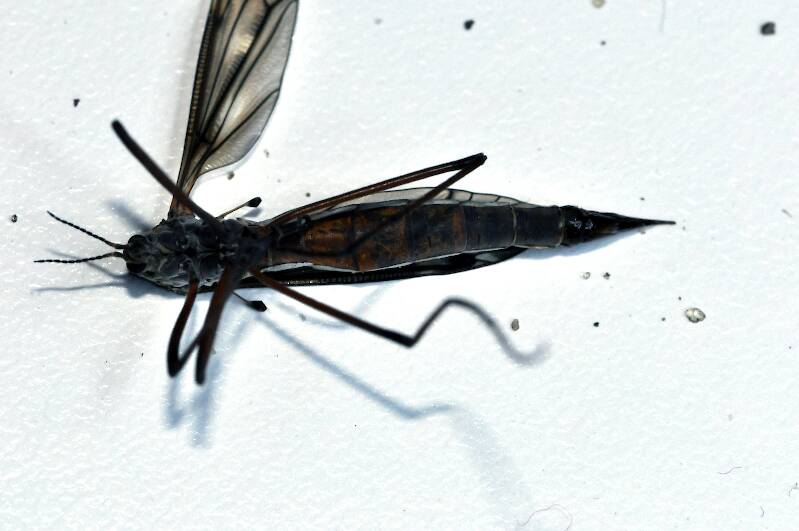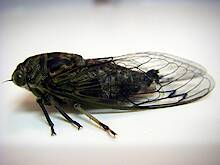
Hex Mayflies
Hexagenia limbata
The famous nocturnal Hex hatch of the Midwest (and a few other lucky locations) stirs to the surface mythically large brown trout that only touch streamers for the rest of the year.
Featured on the forum

I was not fishing, but happened to be at an unrelated social event on a hill above this tiny creek (which I never even saw) when this stonefly flew by me. I assume it came from there. Some key characteristics are tricky to follow, but process of elimination ultimately led me to Sweltsa borealis. It is reassuringly similar to this specimen posted by Bob Newell years ago. It is also so strikingly similar to this nymph from the same river system that I'm comfortable identifying that nymph from this adult. I was especially pleased with the closeup photo of four mites parasitizing this one.

Troutnut is a project started in 2003 by salmonid ecologist Jason "Troutnut" Neuswanger to help anglers and
fly tyers unabashedly embrace the entomological side of the sport. Learn more about Troutnut or
support the project for an enhanced experience here.
DayTripper has attached these 3 pictures to aid in identification. The message is below.



DayTripper on May 30, 2013May 30th, 2013, 4:17 pm EDT
Collected this guy on a northern Michigan trout pond last night. Found it struggling on the surface in the middle of the lake. Not sure if it just emerged or if it fell in while flying over. Anyone know how to tell what the sex is on these? I am also curious what genus/species it might be. Thanks!
Sayfu
Posts: 560
Posts: 560
Sayfu on May 30, 2013May 30th, 2013, 4:37 pm EDT
I don't think they ever emerge out of the water. Don't all craneflies pupate, and emerge on land? Always scary to say "all".
DayTripper on May 30, 2013May 30th, 2013, 4:59 pm EDT
According to the crane fly page here on troutnut,
"Hatching Behavior
Craneflies pupate for one to three weeks. The species which do so in the water then swim to the surface to emerge in the style of caddisflies, and are presumably vulnerable to trout, though I have not read about good fishing during these events.
Swisher and Richards in Selective Trout say the larvae all crawl out of the water to pupate, conflicting with the above account. There are so many species that it seems likely both behaviors occur in some species."
I checked a half dozen other websites and all say that they crawl onto land. In Matching the Hatch, Schweibert references species that pupate and emerge in the water (late mornings). McCafferty also references that there are species that pupate in water, but doesn't go into much detail.
"Hatching Behavior
Craneflies pupate for one to three weeks. The species which do so in the water then swim to the surface to emerge in the style of caddisflies, and are presumably vulnerable to trout, though I have not read about good fishing during these events.
Swisher and Richards in Selective Trout say the larvae all crawl out of the water to pupate, conflicting with the above account. There are so many species that it seems likely both behaviors occur in some species."
I checked a half dozen other websites and all say that they crawl onto land. In Matching the Hatch, Schweibert references species that pupate and emerge in the water (late mornings). McCafferty also references that there are species that pupate in water, but doesn't go into much detail.
Taxon on May 30, 2013May 30th, 2013, 5:27 pm EDT
DayTripper-
The terminal adominal segment of a male is expanded and rounded, whereas the female's tapers to a point. So, I believe your photos are of a female.
Anyone know how to tell what the sex is on these?
The terminal adominal segment of a male is expanded and rounded, whereas the female's tapers to a point. So, I believe your photos are of a female.
Creno on May 30, 2013May 30th, 2013, 5:38 pm EDT
Definitely a female - males have much more complex parts. Is that a metric or english rule? I see the 10ths but I have an english rule in 10ths so thought I would check. If english it is likely one of the Tipula. If metric I suspect there are some other genera that large. Tipula are not typically pond forms, more likely the marshy areas surrounding the pond.
DayTripper on May 30, 2013May 30th, 2013, 5:44 pm EDT
Thanks, guys!
Its a metric ruler, I measured this one at a smidge under 25mm.
Its a metric ruler, I measured this one at a smidge under 25mm.
Crepuscular on Jun 1, 2013June 1st, 2013, 5:31 am EDT
Ok I'm definitely not an expert but the elongated abdomen of this female narrows it down somewhat and after running it through the key, I'm somewhat confident in my determination... Definitely Tipulidae, probably Tipula dorsimacula. Pretty common from what I read and very widespread distribution. One generation a year. If it is T. dorsimacula, it is a terrestrial species (the ovipositor is a clue to that) that probably just fell into the water.
Quick Reply
Related Discussions
Topic
Replies
Last Reply
3
Oct 3, 2008
by GONZO
by GONZO
16
Mar 2, 2010
by Martinlf
by Martinlf
1
Nov 3, 2015
by TimCat
by TimCat




